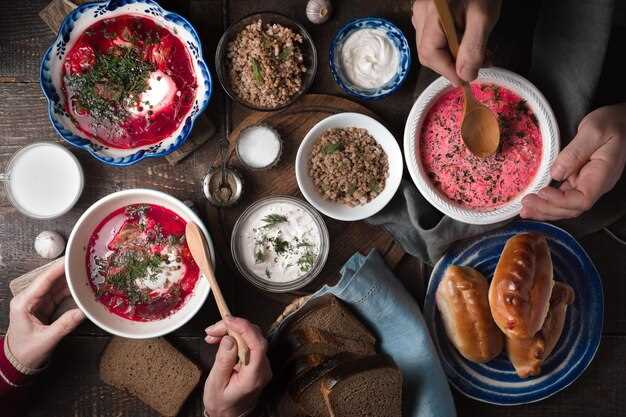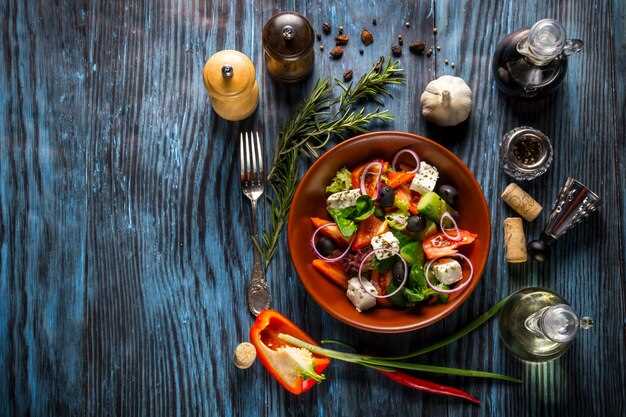
Indulge your senses and immerse yourself in the diverse and enticing world of Swedish gastronomy. This Nordic nation is renowned for its rich culinary heritage, offering a plethora of traditional dishes and culinary delights that are sure to captivate even the most discerning palate.
Prepare to be enchanted by the unique blend of flavors that define Swedish cuisine. From hearty and comforting classics to innovative and contemporary creations, each dish tells a story of the country’s history, culture, and natural abundance. With a focus on fresh, locally sourced ingredients, Swedish cuisine celebrates simplicity, authenticity, and a deep connection to nature.
Discover the art of Swedish cooking, where simplicity meets sophistication. The use of herbs, spices, and aromatic ingredients adds depth and complexity to every dish, creating a harmonious symphony of flavors that will leave you craving for more. Whether you prefer the bold and robust flavors of smoked fish or the delicate sweetness of lingonberries, Swedish cuisine offers a diverse range of taste sensations that are sure to leave a lasting impression.
Traditional Swedish Dishes: From Meatballs to Herring
Embark on a culinary journey through the diverse and flavorful world of traditional Swedish cuisine. From the iconic meatballs to the beloved herring dishes, Swedish gastronomy offers a rich tapestry of flavors and culinary delights that are sure to tantalize your taste buds.
Meatballs: A Swedish Classic
One cannot discuss Swedish cuisine without mentioning the famous meatballs, known locally as “köttbullar.” These savory spheres of ground meat, typically a mixture of beef and pork, are seasoned with a blend of herbs and spices, giving them their distinct flavor. Served with lingonberry sauce and creamy mashed potatoes, meatballs are a beloved comfort food in Sweden.
Herring: A Delicacy of the Sea
Another staple of Swedish cuisine is herring, a versatile fish that is prepared in various ways. Whether pickled, smoked, or fermented, herring dishes are a true delight for seafood lovers. The traditional Swedish herring feast, known as “sillbord,” features an array of herring preparations, accompanied by an assortment of flavorful sauces, crispbread, and boiled potatoes.
| Dish | Description |
|---|---|
| Smörgåsbord | A traditional Swedish buffet-style meal consisting of a wide variety of dishes, including herring, cured meats, cheeses, and bread. |
| Janssons Frestelse | A gratin dish made with potatoes, onions, cream, and anchovies, creating a creamy and savory delight. |
| Råraka | A crispy potato pancake often served with sour cream and caviar, providing a delightful combination of textures and flavors. |
These are just a few examples of the many traditional Swedish dishes that showcase the country’s culinary heritage. Whether you’re a fan of hearty meatballs or a lover of seafood, Swedish cuisine offers a wide range of flavors and dishes to satisfy every palate.
Smörgåsbord: The Art of Swedish Buffet
Discover the exquisite tradition of the Swedish smörgåsbord, a culinary experience that showcases the diverse and flavorful delights of Swedish cuisine. This unique buffet-style dining concept allows diners to indulge in a wide array of dishes, each carefully crafted to tantalize the taste buds and showcase the rich culinary heritage of Sweden.
A Feast for the Senses

At a Swedish smörgåsbord, the emphasis is not only on the taste of the food but also on the visual presentation and the overall dining experience. The buffet table is a sight to behold, adorned with an impressive selection of dishes that range from savory to sweet, hot to cold, and everything in between. The vibrant colors, intricate garnishes, and meticulous arrangement of the food create a feast for the eyes, enticing guests to explore the culinary wonders that await.
A Symphony of Flavors
One of the defining characteristics of a Swedish smörgåsbord is the wide variety of flavors that are offered. From the tangy pickled herring to the creamy gravlax, from the hearty meatballs to the delicate princess cake, each dish represents a unique combination of ingredients and spices that come together to create a harmonious symphony of flavors. The smörgåsbord allows diners to sample and savor these diverse tastes, providing a true culinary adventure.
Swedish Culinary Delights: Exploring the World of Fika
Indulge in the delightful Swedish tradition of Fika, a cultural phenomenon that goes beyond a simple coffee break. Fika is a cherished ritual that allows Swedes to take a moment to pause, connect, and savor the simple pleasures of life. It is a time to enjoy a warm cup of coffee or tea accompanied by an array of delectable treats, creating a harmonious blend of flavors and textures.
During Fika, one can experience the art of conversation and relaxation, as well as the joy of indulging in a variety of sweet and savory delicacies. From freshly baked cinnamon buns, known as kanelbullar, to delicate almond tarts and cardamom-spiced cakes, every bite offers a symphony of flavors that awaken the senses.
Embrace the Swedish tradition of Fika and discover the joy of slowing down, appreciating the moment, and treating yourself to a well-deserved break. Whether enjoyed alone or in the company of friends and loved ones, Fika is a delightful journey into the heart of Swedish culinary delights.
So, next time you find yourself in Sweden or simply want to experience a taste of Swedish culture, make sure to immerse yourself in the world of Fika. Allow the aroma of freshly brewed coffee and the enticing display of pastries to transport you to a place where time stands still, and the only thing that matters is the pleasure of indulging in the rich flavors and warm hospitality of Swedish cuisine.
Foraging in Sweden: The Secret Ingredient of Nordic Cuisine
Exploring the bountiful landscapes of Sweden unveils a hidden treasure that lies at the heart of Nordic cuisine. Foraging, the age-old practice of gathering wild edible plants and mushrooms, is a fundamental element that adds a unique and distinctive flavor to Swedish dishes. This ancient tradition has been passed down through generations, contributing to the rich tapestry of flavors that define Swedish gastronomy.
The Art of Foraging

Foraging is an art that requires a deep understanding of nature’s offerings and a keen eye for identifying edible treasures. In Sweden, the abundance of forests, meadows, and coastal areas provides a diverse range of ingredients waiting to be discovered. From the vibrant green shoots of wild garlic to the delicate petals of forest flowers, foragers embark on a sensory journey, connecting with the land and its natural resources.
A Symphony of Flavors
The incorporation of foraged ingredients in Swedish cuisine elevates dishes to a whole new level, creating a symphony of flavors that tantalize the taste buds. The earthy aroma of freshly picked mushrooms, the tangy sweetness of wild berries, and the subtle bitterness of herbs all come together to create a harmonious balance on the plate. These unique flavors not only showcase the diversity of Sweden’s natural landscape but also reflect the deep-rooted connection between the people and their environment.
Foraging in Sweden is not just about sustenance; it is a celebration of nature’s abundance and a way to preserve traditional knowledge. It is a reminder of the importance of sustainable practices and the appreciation of the natural world. So, the next time you indulge in Swedish cuisine, savor the flavors that foraging brings, and experience the secret ingredient that makes Nordic dishes truly extraordinary.
Modern Twist: Contemporary Swedish Cuisine and Fusion Flavors
Embracing innovation and creativity, modern Swedish cuisine has evolved to incorporate a fusion of flavors from around the world. This exciting culinary movement combines traditional Swedish ingredients and techniques with global influences, resulting in a unique and vibrant dining experience.
Contemporary Swedish chefs have taken inspiration from various cuisines, such as Asian, Mediterranean, and Middle Eastern, to create innovative dishes that showcase the diversity of flavors. By blending traditional Swedish ingredients like herring, lingonberries, and dill with exotic spices, herbs, and cooking methods, these chefs have crafted a new culinary identity that is both familiar and adventurous.
One notable aspect of contemporary Swedish cuisine is the emphasis on locally sourced and sustainable ingredients. Chefs prioritize using organic produce, ethically raised meats, and responsibly caught seafood to create dishes that are not only delicious but also environmentally conscious. This commitment to sustainability adds an extra layer of depth to the flavors and enhances the overall dining experience.
Another exciting trend in modern Swedish cuisine is the incorporation of foraged ingredients. Chefs venture into the forests and meadows to gather wild mushrooms, berries, and herbs, infusing their dishes with a touch of nature’s bounty. This connection to the land and the seasons adds a sense of authenticity and freshness to the flavors, making each bite a true delight.
Furthermore, contemporary Swedish cuisine embraces innovative cooking techniques and presentation styles. Chefs experiment with molecular gastronomy, sous vide cooking, and artistic plating to create visually stunning dishes that are as pleasing to the eye as they are to the palate. This fusion of culinary artistry and scientific precision elevates the dining experience to new heights.
| Key Features of Modern Swedish Cuisine: |
|---|
| 1. Fusion of traditional Swedish ingredients with global flavors |
| 2. Emphasis on locally sourced and sustainable ingredients |
| 3. Incorporation of foraged ingredients |
| 4. Experimentation with innovative cooking techniques and presentation styles |